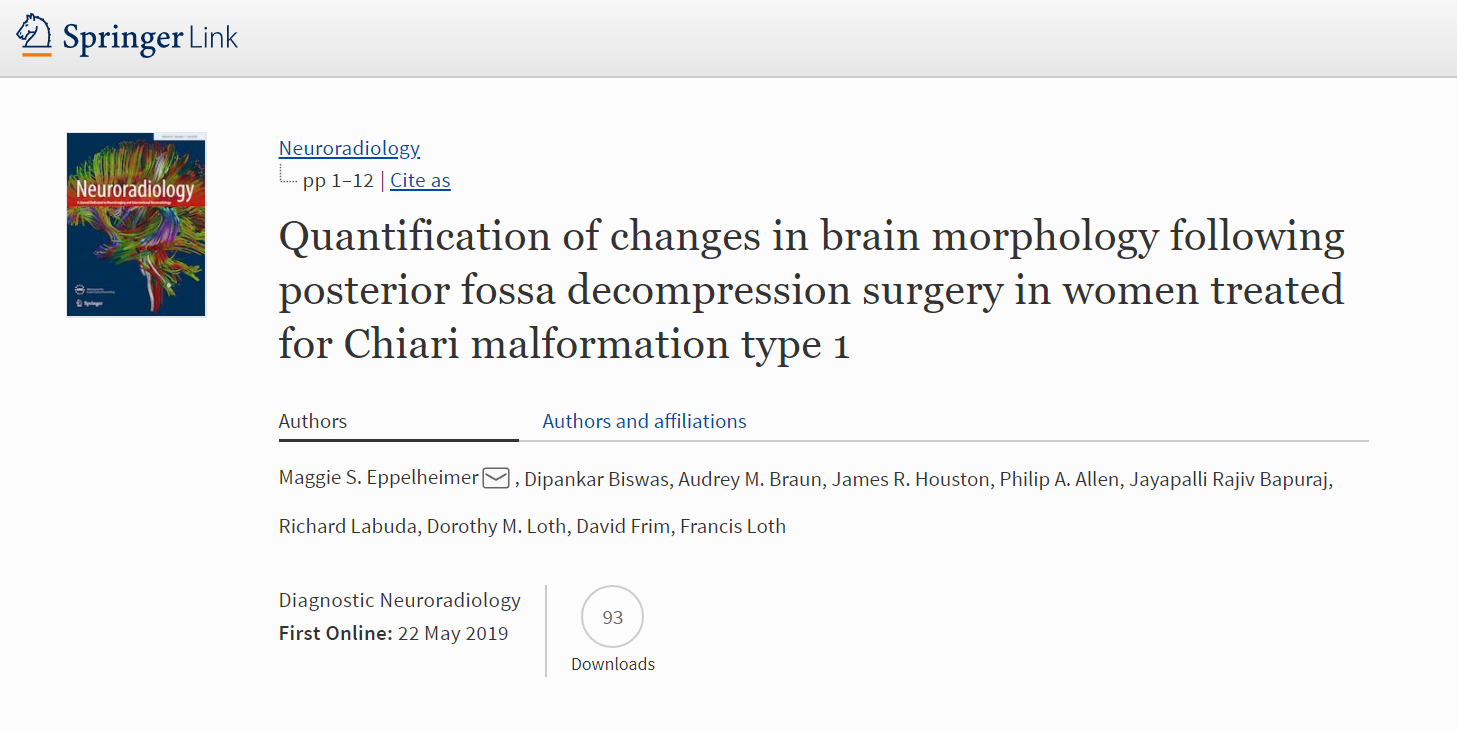Purpose. Researchers have sought to better understand Chiari type I malformation (CMI) through morphometric measurements beyond tonsillar position (TP). Soft tissue and bone structures within the brain and craniocervical junction have been shown to be different for CMI patients compared to healthy controls. Yet, several morphological characteristics have not been consistently associated with CMI. CMI is also associated with different prevalent conditions (PCs) such as syringomyelia, pseudotumor, Ehlers-Danlos syndrome (EDS), scoliosis, and craniocervical instability. The goal of this study was two-fold: (1) to identify unique morphological characteristics of PCs, and (2) to better explain inconsistent results from case-control comparisons of CMI.
Methods. Image, demographic, and PC information was obtained through the Chiari1000, a self-report web-accessed database. 28 morphometric measurements (MMs) were performed on the cranial MR images of 236 pre-surgery adult female CMI participants and 140 female healthy control participants. Custom software was used to measure 28 soft tissue and bone structures within the posterior cranial fossa (PCF) compartment, craniocervical junction, oral cavity, and intracranial area based on mid-sagittal MR imaging for each participant.
Results. Morphometric analysis of adult females indicated a smaller McRae line length in CMI participants with syringomyelia compare to those without syringomyelia. TP was reduced in CMI participants with EDS compared to those without EDS. Basion to posterior axial line was significantly longer in CMI participants with scoliosis compared to those without scoliosis. No additional MMs were found to differ between CMI participants with and without a specific PC. Four morphometric differences were found to be consistently different between CMI participants and healthy controls regardless of PC: larger TP and a smaller clivus length, fastigium, and corpus callosum height in CMI participants.
Conclusion. Syringomyelia, EDS, and scoliosis were the only PCs that showed significant morphometric differences between CMI participants. Additionally, four mid-sagittal MR-based MMs were found to be significantly different between healthy controls and CMI participants regardless of the presence of one or more PCs. This study suggests that the prevalence of comorbid conditions are not strongly related to CMI morphology, and that inconsistent findings in the radiographic literature cannot be explained by varying prevalence of comorbid conditions in CMI study samples.
Contributors
Maggie S. Eppelheimer, James R. Houston, Jayapalli Rajiv Bapuraj, Richard Labuda, Dorothy M. Loth, Audrey M. Braun, Natalie J. Allen, Soroush Heidari Pahlavian, Dipankar Biswas, Aintzane Urbizu, Bryn A. Martin, Cormac O. Maher, Philip A. Allen, Francis Loth
Publication
Frontiers in Neuroanatomy


















